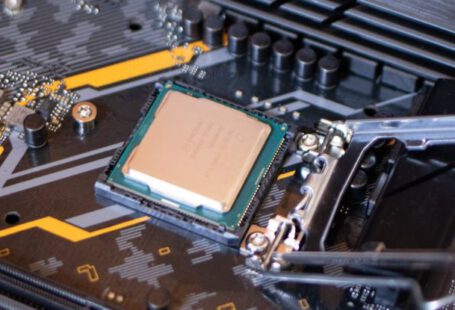For serious gamers, having the right monitor can make a significant difference in their overall gaming experience. With the vast array of monitors available on the market today, choosing the perfect one for gaming can be a daunting task. Factors such as resolution, refresh rate, response time, panel type, and connectivity options all play a crucial role in determining the suitability of a monitor for gaming purposes. In this article, we will delve into the key considerations you should keep in mind when selecting a monitor for gaming to ensure an immersive and seamless gaming experience.
Resolution
One of the first things to consider when choosing a gaming monitor is its resolution. The resolution of a monitor determines the clarity and level of detail you will experience in your games. While 1080p (Full HD) monitors are still popular and offer a good balance between performance and affordability, higher resolutions such as 1440p (Quad HD) and 4K provide sharper images and more immersive gameplay. Opting for a monitor with a higher resolution can enhance your gaming experience by offering more detailed graphics and improved visual fidelity.
Refresh Rate
The refresh rate of a monitor is another crucial factor to consider for gaming. The refresh rate refers to the number of times the monitor updates the image per second and is measured in Hertz (Hz). A higher refresh rate results in smoother gameplay and reduces motion blur, making it ideal for fast-paced games. Monitors with refresh rates of 144Hz or higher are recommended for gaming, as they provide a more responsive and fluid gaming experience. If you are into competitive gaming, consider investing in a monitor with a refresh rate of 240Hz for the ultimate advantage.
Response Time
Response time is the time it takes for a pixel to change from one color to another, typically measured in milliseconds (ms). A lower response time results in less motion blur and ghosting, which are crucial for fast-paced gaming genres. Look for a monitor with a response time of 5ms or lower to ensure smooth and lag-free gameplay. Monitors with higher response times may introduce input lag, which can impact your gaming performance, especially in competitive scenarios.
Panel Type
The panel type of a monitor can also influence your gaming experience. The most common panel types used in gaming monitors are Twisted Nematic (TN), In-Plane Switching (IPS), and Vertical Alignment (VA). TN panels offer fast response times and high refresh rates, making them suitable for competitive gaming. IPS panels provide better color accuracy and viewing angles, making them ideal for immersive gaming experiences. VA panels offer high contrast ratios and deeper blacks, enhancing the visual quality of games. Choose a panel type based on your gaming preferences and priorities.
Connectivity Options
When selecting a gaming monitor, consider the connectivity options it offers to ensure compatibility with your gaming setup. Look for monitors that provide multiple input ports such as HDMI, DisplayPort, and USB to accommodate various devices like gaming consoles, PCs, and peripherals. Additionally, features like USB hubs, headphone jacks, and built-in speakers can add convenience and versatility to your gaming experience. Ensure the monitor has the necessary ports and features to meet your gaming needs.
Choosing the Right Size
The size of the monitor is a personal preference that can impact your gaming experience. Larger monitors offer a more immersive gaming experience and can enhance your field of view, especially in open-world games and simulations. However, smaller monitors may provide a more focused gaming experience and reduce eye strain during extended gaming sessions. Consider factors such as desk space, viewing distance, and personal preferences when selecting the size of your gaming monitor.
Ergonomics and Adjustability
Ergonomics and adjustability are often overlooked but essential aspects when choosing a gaming monitor. Look for monitors that offer height adjustment, tilt, swivel, and pivot capabilities to customize the viewing angle and ensure a comfortable gaming setup. A monitor with a VESA mount allows you to attach it to a monitor arm or wall mount for more flexibility. Proper ergonomics can reduce neck strain, eye fatigue, and improve overall comfort during long gaming sessions.
Conclusion: Finding the Perfect Gaming Monitor
Selecting the right monitor for gaming involves considering various factors such as resolution, refresh rate, response time, panel type, connectivity options, size, and ergonomics. By understanding your gaming preferences and priorities, you can choose a monitor that enhances your gaming experience and provides the performance and visual quality you desire. Remember to balance your budget with the features and specifications that matter most to you to find the perfect gaming monitor that meets your needs and elevates your gaming adventures.





